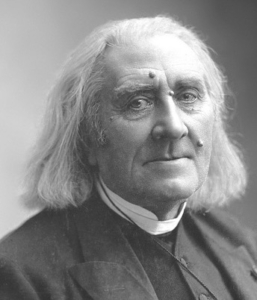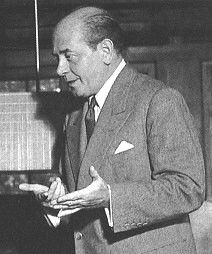REVIEW POTPOURRI: Franz Liszt
 by Peter Cates
by Peter Cates
Franz Liszt
One of the very first classical records to give pleasure to me during seventh grade was a 12-inch 78 (Columbia Masterworks 12437) of the Second Hungarian Rhapsody, by Franz Liszt (1811-1886), as performed by Eugene Ormandy (1899-1985) with the Phildelphia Orchestra and recorded April 18, 1946.
Lasting just under 10 minutes, the piece is divided into two parts, the first being a slowly paced and haunting atmospheric scoring for strings while the second accelerates into an explosively jubilant dance for full orchestra. Ormandy, being justly renowned for bringing the rich string sound, that his predecessor Leopold Stokowski (1882-1975) had already achieved there, to an even greater sustained level, conducted a very exciting performance which can be heard on YouTube.
Ormandy would later re-record the Rhapsody but this earlier one still stands out.
Ormandy also recorded the Liszt tone poem Les Preludes at least twice. Again a 78 set is my favorite for its extra adrenaline and was released on Victor , M-453. It is a very colorful show piece in which Philadelphia’s strings, woodwinds, brass and percussion display their virtuosity (In 1943, Ormandy and the Orchestra would record for Columbia for 25 years before returning to RCA Victor in 1968.).
Liszt composed two Piano Concertos and the Totentanz also for piano and orchestra. In 1960, Ormandy collaborated with pianist Philippe Entremont, himself still living at 90. Ormandy has also left a recording of another Liszt tone poem, Mephisto Waltz.
During his youth, Liszt himself was a legendary virtuoso touring Europe with mobs of screaming women fans; in 1837, he was involved in an affair with Countess Marie D’Agoult and she gave birth to a daughter Cosima who would later marry composer Richard Wagner (1813-1883).
While still living the flamboyant life of a touring celebrity, Liszt, according to the writer Samuel Chotzinoff, “made the quixotic decision to quit the concert stage and accept the post of musical director in the small town of Weimar [Germany], at a salary of a thousand dollars a year, there to devote his time to composing, conducting and teaching the piano without pay.”
For the remaining 38 years of his life, Franz Liszt was unstintingly generous with his time and money to the mentoring of younger composers and musicians. He would eventually practice a religious asceticism, dressed in a priestly cassock and becoming the Abbe Liszt.
Other very good interpreters of Liszt’s music include pianists Artur Rubinstein, Alfred Brendel, Van Cliburn, Sviatoslav Richter, Lazar Berman, George Bolet, Claudio Arrau, Annie Fischer, Walter Gieseking, and Martha Argerich; and conductors Leonard Bernstein, Fritz Reiner, Herbert von Karajan, Selmar Meyrowitz, Alceo Galliera, Antal Dorati, Jascha Horenstein, Sir Thomas Beecham, Anatole Fistoulari and Sir Georg Solti, etc.
A story is told of Schumann and Brahms visiting Liszt, of Liszt playing his own Piano Sonata for the two guests and of Brahms falling asleep. Liszt was not happy.
Responsible journalism is hard work!
It is also expensive!
If you enjoy reading The Town Line and the good news we bring you each week, would you consider a donation to help us continue the work we’re doing?
The Town Line is a 501(c)(3) nonprofit private foundation, and all donations are tax deductible under the Internal Revenue Service code.
To help, please visit our online donation page or mail a check payable to The Town Line, PO Box 89, South China, ME 04358. Your contribution is appreciated!




Leave a Reply
Want to join the discussion?Feel free to contribute!